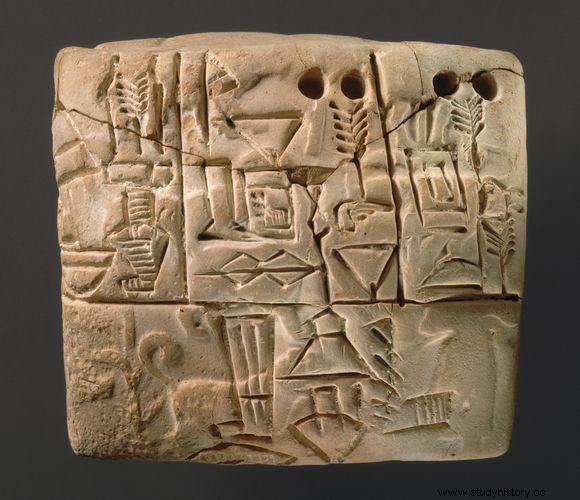Sumer , site of the earliest known civilization, is in southernmost Mesopotamia between the Tigris and the Euphrates in the area that later becomes Babylonia became and today in South Iraq is , from Baghdad to Persian Gulf .

 Britannica Quiz The Middle East:Fact or Fiction? Is the literacy rate very high in Afghanistan? Does Yemen take its name from the Arabic word "northern"? Sort the facts in this quiz about Syria, Iraq and other Middle Eastern countries.
Britannica Quiz The Middle East:Fact or Fiction? Is the literacy rate very high in Afghanistan? Does Yemen take its name from the Arabic word "northern"? Sort the facts in this quiz about Syria, Iraq and other Middle Eastern countries. The following is a brief treatment of Sumerian civilization. For a full treatment see Mesopotamia, History of Sumerian Civilization .
Sumer first became between 4500 and 4000 v. Populated by a non-Semitic people who used the Sumerian language not language . These people are now called Proto-Euphrateans or Ubaidians, for the village Al-ʿUbayd where their remains were first discovered. The Ubaids were the first civilizational force in Sumer, draining the swamps for agriculture, developing trade, and industries like Weave , leatherwork, metalwork, Masonry and Pottery based . After the Ubaidian immigration to Mesopotamia, various Semitic peoples infiltrated their territory, adding their Cultures the Ubaidian Add culture and created a tall Pre-Sumerian civilization.

The people called Sumerians, whose language became the dominant language of the territory, probably came from Anatolia and came in at 3300 v . Chr . In Sumer to . Up to the 3rd millennium v . Chr . Goods has at least 12 different city-states in the country: Kish , Rech (Uruk), Ur , Sippar , Akshak , Larak, Nippur , Adab , Umma , Lagash , Bad-Tibira and Larsa . Each of these states consisted of of a walled city and its surrounding villages and estates, each worshiping its own deity, whose temples formed the central structure of the city was. Political power originally belonged to the citizens, but as rivalry between the various city-states increased, each took over the institution of royalty . A received document, The Sumerian King List , Recordings that before the great flood there were eight kings.
After the Deluge, various city-states and their Dynasties kings temporarily gain power over the others. The first king to unite the individual city-states was Etana , ruler of Kish ( approx. 2800 v. Chr. ). After that, for centuries, Kish, Erech, Ur, and Lagash vied for ascension, making Sumer for external conquerors vulnerable Elamite ( approx. 2530–2450 v. Chr . ) And later the Akkadians, led by their king Sargon (reg. 2334–2279 v . Ch. ). Though Sargon's Dynasty Lasted only about 100 years, it unified the city-states and created a model of government that influenced all Middle Eastern civilization.
After Sargon's dynasty, Sumer recovered from a devastating semi-barbarian invasion Gutians , the city-states became independent again. The culmination of this last era of Sumerian civilization was the reign of the 3rd dynasty of Ur, whose first king, Ur-Nammu published the earliest Code that previously discovered in Mesopotamia.
After 1900 v. , as the Amorites conquered all of Mesopotamia, the Sumerians lost their own identity, but they bequeath their Semitic successors and left the world with a number of technological and cultural contributions, including the first wheeled vehicles and potter's wheels. the first writing system, cuneiform; the first legal codes; and the first city-states.
